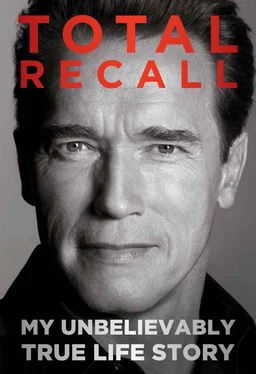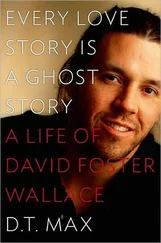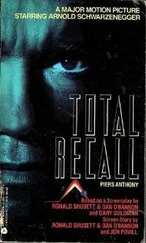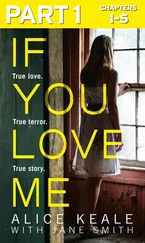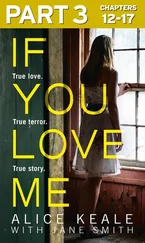_
All our preparation paid off in late 2007, when particularly severe wildfires broke out up and down the state. The worst were in the south, near San Diego, where despite the firefighters’ best efforts, the blazes were spreading, and there were predictions of hurricane-force winds. On the third day of the fires, Monday, October 22, I called my staff for a briefing, as I usually did at six in the morning. They told me that large areas of San Diego were now in danger, and the order had gone out to evacuate a half million people. A half million people! That’s a population the size of New Orleans before Katrina and probably the largest one ever forced out of their homes in California history. Already, thousands were headed toward Qualcomm Stadium, which we’d designated as the main gathering point for evacuees with no place else to stay.
“We’re going down there,” I said. Instead of leaving that morning for Sacramento, I used my office in Santa Monica as a jumping-off point and started making phone calls while my team assembled there. I called San Diego mayor Jerry Sanders, a former police chief, and made plans to meet at the stadium later in the day. Bettenhausen, talking to commanders on the ground, reported that residents were responding to our evacuation message as we’d hoped. The order was designed to convey the two things you needed to know most if your home was in a fire’s path: first, when the police tell you to leave, grab your stuff and go, because a wildfire can spread faster than a person can run; second, not only would we fight to protect your home from the fires, but also the police would patrol your neighborhoods to keep looters away.
We expected ten thousand or more people at Qualcomm Stadium. I figured that under the circumstances, no one would be thinking about things such as diapers and baby formula and dog food. So I made a list and called the head of the California Grocers Association to ask if stores in the region could deliver those items to Qualcomm immediately. He was eager to pitch in.
Then I called the White House and briefed President Bush. Up until this point, we’d had a professional but guarded relationship. President Bush was always available to talk, and while we did not always agree on what the federal government could do for California, I learned quickly that if I raised only one issue at a time, I would get a fair hearing. It wasn’t surprising that I had a warmer relationship with his father. With George H. W. Bush, I was more of an admiring protégé, soaking up everything I could learn. George W. and I were almost exactly the same age, and we both had to represent interests that were sometimes at odds.
But when the fires raged, President Bush was incredibly impressive. He’d learned lessons about emergency responsiveness the hard way during Katrina, and he asked the kinds of questions that only someone who’d been through a disaster would know to ask. He understood that the federal government might not initially move quickly enough, out of a natural need to save responders for other emergencies throughout the country. President Bush told me that his chief of staff would get us everything we needed and that I should call him, the president, directly if there was anything I wanted him to know. I was skeptical, so I called him back forty-five minutes later to ask a question, and he picked up the phone again.
Within three days, President Bush was on the scene. He shook hands with firefighters, visited homes, held press conferences, and peppered me and the fire chiefs with questions. He showed real leadership.
My own chief of staff, meanwhile, reported that the National Guard was on its way. Susan was staying in Sacramento to coordinate the governor’s office response with Dan Dunmoyer, the cabinet secretary, and I’d directed her to have one thousand National Guard troops pulled off a border-security operation and sent to Qualcomm Stadium. She called the adjutant general to say we needed the troops. The guy had obviously never encountered Susan in commando mode before, and he made the mistake of insisting on paperwork. “Okay,” he told her. “We need a mission order.”
“The mission order is to get one thousand men off the border and get them to Qualcomm stat,” she repeated.
“But I need a mission order. It has to say—”
“Here’s your fucking mission order!” she exploded. “Get a thousand troops to Qualcomm. I want them on the move within the hour.” The general got us the troops.
Then she turned to the cots that people would obviously need that night. Thousands of cots, pillows, and blankets had been stockpiled in the region for emergencies. “They’re on their way,” officials kept saying. But she and Dan kept calling and discovered the supplies hadn’t arrived.
“That’s not good enough,” she said, “We need to know they are on the trucks. I want to know exactly where they are en route right now. Give me the cell phone numbers for the drivers.” Hours went by, and the cots couldn’t be found. Rather than wait, we called Walmart and other giant retailers in the state. Later that day, a California National Guard C-130 cargo plane crammed with thousands of donated cots flew out of Moffett Field in Mountain View to San Diego.
Moves like these are not in any disaster response manuals. I saw what happened during Katrina when officials at every level waited for someone else to take action—because that’s what the manuals say you’re supposed to do. “Every disaster is local,” the experts told me. State officials are supposed to wait until local officials ask for assistance; federal officials wait until state officials ask for help, and so on. “Bullshit,” I said. “That’s how thousands of people were left stranded on rooftops in New Orleans. That is not going to happen here.” My rule was simple: “I want action . If you need to do something that’s not in the manual, throw the manual out. Do whatever you have to do. Just get it done.”
Once my team was assembled, we headed for San Diego. We could see the gray haze from the fires over one hundred miles away as soon as the plane took off. That afternoon, I would fly in a helicopter to visit the fire bases and see the blazes firsthand. But communicating with the public was the first concern. I met Mayor Sanders and other local leaders outside Qualcomm, and we went around as a team: first, walking through the hallways and the parking lot to greet the evacuees, emergency workers, and volunteers streaming in, and then talking to the media.
Fortunately, I’d been well prepared on how to communicate during a fire emergency by my predecessor. During the transition period, Gray Davis had graciously contacted me in the midst of a significant but much smaller fire. He asked if I wanted to accompany him while he met firefighters, visited homes, talked to families, and addressed the media. I saw how he absorbed a briefing, and the way he thanked firefighters for their service, while trying not to distract them from their mission. He even served them breakfast as they were coming off the night shift. He would go from home to home, comforting victims, asking them if there was anything the state needed to do. He was a source of strength.
That time we spent together smoothed the transition and proved that we could work together, even though we had battled during the campaign. More importantly, Gray showed me how a governor takes action rather than just phoning in from Sacramento.
In San Diego we started holding regular press conferences so that people would understand that there were no secrets. We spelled out everything step-by-step, saying things like, “We have sixty-mile-per-hour winds, and the flames can jump a mile and a half at a time. But we are going to get this under control.” We sent a clear signal that federal, state, and local responders were all working together, but we were also quick to admit mistakes. Our rule was, “Never bullshit.” When cots got lost, we acknowledged it. It was great to have a guy with Bettenhausen’s experience and sense of humor on hand. He stayed glued by my side, keeping us in touch with the fire chiefs and commanders at the fires. Although the news often wasn’t good, their voices were never frantic, only disciplined and firm: “Governor, we have a major problem. We just lost fifty more homes. We’ve got three firefighters injured, and we’re repositioning our men. We’re evacuating this other area, and CHP and the sheriff are involved, to close off the roads and protect people’s homes …”
Читать дальше
